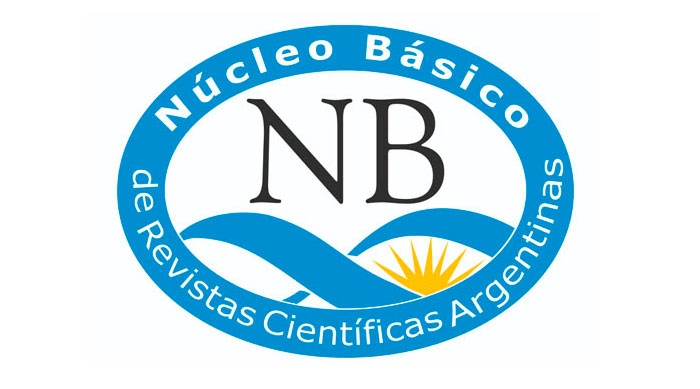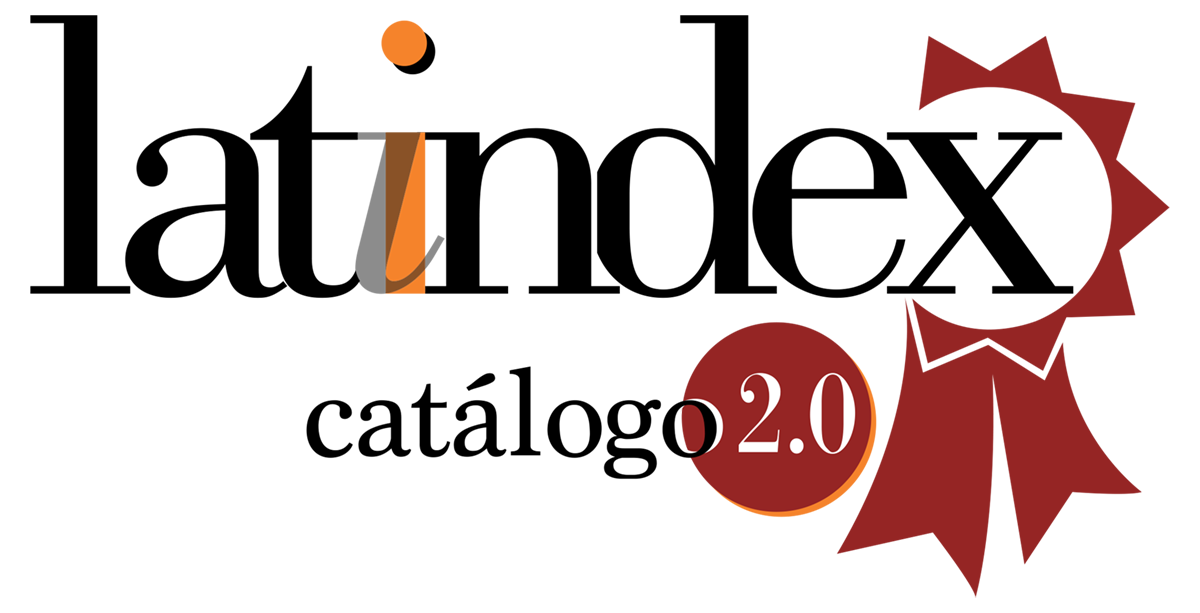Quasigeoid modelling through FFT methods and different types of gravity anomaly grids
Keywords:
Quasigeoid modeling, Spherical FFT, 1D FFT, residual gravity anomaly gridding, ArgentinaAbstract
One of the main strategies for the establishment of the International Height Reference Frame (IHRF) is based on determining high-precision quasigeoid models. The most widely used scheme for quasigeoid modelling is called remove-compute-restore (RCR). Among the multiple stages of RCR, the “compute” stage consists of an integration of the residual gravity anomalies. This integration can be done with FFT methods, which require that residual anomalies be arranged on a grid, which must be obtained from gravity data. Two methodologies for determining the regular grids and the spherical FFT and 1D FFT integration methods are discussed in this paper. In the first case, residual gravity grids were interpolated onto each node. The second grid was determined by interpolating the complete Bouguer anomalies. Afterwards, the gravimetric effect of the topography was computed and restored to obtain a free-air anomaly grid. Finally, the effects of a global geopotential model (GGM) and of residual terrain model (RTM) were removed from each node. Each grid was used as input in both integration methods separately, resulting in four quasigeoid models, which were validated against GNSS/Levelling data. The results show that models generated using the grid constructed with the second strategy are 1 cm more accurate than those constructed with the first strategy. At the same time, the differences between the models built with spherical FFT and 1D FFT are of the order of mm and, therefore, not significant.
Downloads
References
Antokoletz, E. D. (2017). Red Gravimétrica de Primer Orden de la República Argentina. http://sedici.unlp.edu.ar/handle/10915/60950. Facultad de Ciencias Astronómicas y Geofı́sicas, Universidad Nacional de La Plata.
Cimbaro, S., Laurı́a, E., & Piñón, D. (2009). Adopción del nuevo marco de referencia geodésico nacional. Reporte técnico, Instituto Geográfico Militar, Buenos Aires, Argentina. https://ramsac.ign.gob.ar/posgar07_pg_web/documentos/POSGAR_07_RAMSAC.pdf
Drewes, H., Kuglitsch, F. G., Adám, J., & Rózsa, S. (2016). The Geodesist’s Handbook 2016. Journal of Geodesy, 90(10), 907–1205. https://doi.org/10.1007/s00190-016-0948-z
Featherstone, W. E., Evans, J. D., & Olliver, J. G. (1998). A Meissl-modified Vanı́ček and Kleusberg kernel to reduce the truncation error in gravimetric geoid computations. Journal of Geodesy, 72, 154–160. https://doi.org/10.1007/s001900050157
Featherstone, W. E. & Kirby, J. F. (2000). The reduction of aliasing in gravity anomalies and geoid heights using digital terrain data. Geophysical Journal International, 141(1), 204–212. https://doi.org/10.1046/j.1365-246X.2000.00082.x
Forsberg, R. (1984). A study of terrain reductions, density anomalies and geophysical inversion methods in gravity field modelling, volumen 5. Ohio State University, Department of Geodetic Science and Surveying.
Forsberg, R. & Sideris, M. G. (1993). Geoid computations by the multi-band spherical FFT approach. Manuscripta Geodaetica, 18, 82–82.
Forsberg, R. & Tscherning, C. C. (2008). An overview manual for the GRAVSOFT geodetic gravity field modelling programs. Reporte técnico, DTU Space. http://cct.gfy.ku.dk/publ_cct/cct19_36.pdf
Fotopoulos, G., Kotsakis, C., & Sideris, M. G. (2000). A new Canadian geoid model in support of levelling by GPS. Geomatica, 54(1), 53–62. https://doi.org/10.5623/geomat-2000-0006
Haagmans, R. E. (1993). Fast evaluation of convolution integrals on the sphere using 1d FFT, and a comparison with existing methods for Stokes’ integral. Manuscripta Geodaetica, 18, 227–241.
Heiskanen, W. A. & Moritz, H. (1967). Physical Geodesy. Bulletin Géodésique (1946-1975), 86(1), 491–492.
Hinze, W. J., Aiken, C., Brozena, J., Coakley, B., Dater, D., Flanagan, G., et al. (2005). New standards for reducing gravity data: The North American gravity database. Geophysics, 70(4), J25–J32. https://doi.org/10.1190/1.1988183
Hofmann-Wellenhof, B. & Moritz, H. (2006). Physical Geodesy. Springer Science & Business Media. https://doi.org/10.1007/978-3-211-33545-1
Ihde, J., Sánchez, L., Barzaghi, R., Drewes, H., Foerste, C., Gruber, T., et al. (2017). Definition and proposed realization of the International Height Reference System (IHRS). Surveys in Geophysics, 38, 549–570. https://doi.org/10.1007/s10712-017-9409-3
Instituto Geográfico Nacional (2016). Sistema de Referencia Vertical Nacional de la República Argentina. Reporte técnico, Buenos Aires, Argentina. https://ramsac.ign.gob.ar/posgar07_pg_web/documentos/Informe_Red_de_Nivelacion_de_la_Republica_Argentina.pdf
Instituto Geográfico Nacional (2021). Modelo Digital de Elevaciones de la República Argentina. Reporte técnico, Buenos Aires, Argentina. https://www.ign.gob.ar/archivos/Informe_MDE-Ar_v2.1_30m.pdf
Johnston, G., Riddell, A., & Hausler, G. (2017). The International GNSS Service. Springer Handbook of Global Navigation Satellite Systems, Springer Handbooks. Springer, Cham. https://doi.org/10.1007/978-3-319-42928-1_33
Moritz, H. (1978). Least-squares collocation. Reviews of Geophysics, 16(3), 421–430. https://doi.org/10.1029/RG016i003p00421
Moritz, H. (1980). Advanced Physical Geodesy. Advances in Planetary Geology.
Moritz, H. (2000). Geodetic reference system 1980. Journal of Geodesy, 74(1), 128–133. https://doi.org/10.1007/BF02521480
Mäkinen, J. (2021). The permanent tide and the International Height Reference Frame (IHRF). Journal of Geodesy, 95(9), 106. https://doi.org/10.1007/s00190-021-01541-5
Piñón, D. (2016). Development of a precise gravimetric geoid model for Argentina. Universidad RMIT, Alemania. https://researchrepository.rmit.edu.au/view/pdfCoverPage?instCode=61RMIT_INST&filePid=13248372990001341&download=true. Tesis de doctorado
Sansò, F. & Sideris, M. G., editores (2013). Geoid Determination: Theory and Methods. Springer Science & Business Media. https://doi.org/10.1007/978-3-540-74700-0
Schwarz, K. P., Sideris, M. G., & Forsberg, R. (1990). The use of FFT techniques in physical geodesy. Geophysical Journal International, 100(3), 485–514. https://doi.org/10.1111/j.1365-246X.1990.tb00701.x
Sánchez, L., Ågren, J., Huang, J., et al. (2021). Strategy for the realisation of the International Height Reference System (IHRS). Journal of Geodesy, 95, 33. https://doi.org/10.1007/s00190-021-01481-0
Tocho, C. & Vergos, G. S. (2015). Estimation of the Geopotential Value W 0 for the Local Vertical Datum of Argentina using EGM2008 and GPS/Levelling Data. IAG 150 Years, volumen 143 of International Association of Geodesy Symposia. Springer, Cham. https://doi.org/10.1007/1345_2015_32
Tocho, C. N., Antokoletz, E. D., Gómez, A. R., Guagni, H., & Piñon, D. A. (2022). Analysis of high-resolution global gravity field models for the estimation of International Height Reference System (IHRS) coordinates in Argentina. Journal of Geodetic Science, 12(1), 131–140. https://doi.org/10.1515/jogs-2022-0139.
van Hees, G. S. (1991). Stokes formula using Fast Fourier Techniques. Determination of the Geoid, volumen 106 of International Association of Geodesy Symposia. Springer, New York, NY. https://doi.org/10.1007/978-1-4612-3104-2_47
Wong, L. & Gore, R. (1969). Accuracy of geoid heights from modified Stokes kernels. Geophysical Journal International, 18(1), 81–91. https://doi.org/10.1111/j.1365-246X.1969.tb00264.x
Yildiz, H., Forsberg, R., Ågren, J., Tscherning, C., & Sjöberg, L. (2012). Comparison of remove-compute-restore and least squares modification of Stokes’ formula techniques to quasi-geoid determination over the Auvergne test area. Journal of Geodetic Science, 53–64. https://doi.org/10.2478/v10156-011-0024-9
Zingerle, P., Pail, R., Gruber, T., & Oikonomidou, X. (2020). The combined global gravity field model XGM2019e. Journal of Geodesy, 94, 1–12. https://doi.org/10.1007/s00190-020-01398-0
Downloads
Published
How to Cite
Issue
Section
License

This work is licensed under a Creative Commons Attribution-NonCommercial-ShareAlike 4.0 International License.
Starting in 2022 (Vol. 43 number 2) articles will be published in the journal under a Creative Commons Attribution-NonCommercial-ShareAlike 4.0 International license (CC BY-NC-SA 4.0)
According to these terms, the material can be shared (copied and redistributed in any medium or format) and adapted (remixed, transformed and created from the material another work), provided that a) the authorship and the original source of its publication (journal and URL of the work), b) is not used for commercial purposes and c) the same license terms are maintained.
Prior to this date the articles were published in the journal under a Creative Commons Attribution license (CC BY)
In both cases, the acceptance of the originals by the journal implies the non-exclusive assignment of the economic rights of the authors in favor of the editor, who allows reuse, after editing (postprint), under the license that corresponds according to the edition.
Such assignment means, on the one hand, that after its publication (postprint) in the GEOACTA Magazine of the Association of Geophysicists and Geodesists, the authors can publish their work in any language, medium and format (in such cases, it is requested that it be recorded that the material was originally published in this journal); on the other, the authorization of the authors for the work to be harvested by SEDICI, the institutional repository of the National University of La Plata, and to be disseminated in the databases that the editorial team considers appropriate to increase visibility. of the publication and its authors.
Likewise, the journal encourages the authors so that after their publication in the Journal of the Association of Geophysicists and Geodesists, they deposit their productions in other institutional and thematic repositories, under the principle that offering society scientific production and Unrestricted academic scholarship contributes to a greater exchange of global knowledge.
















